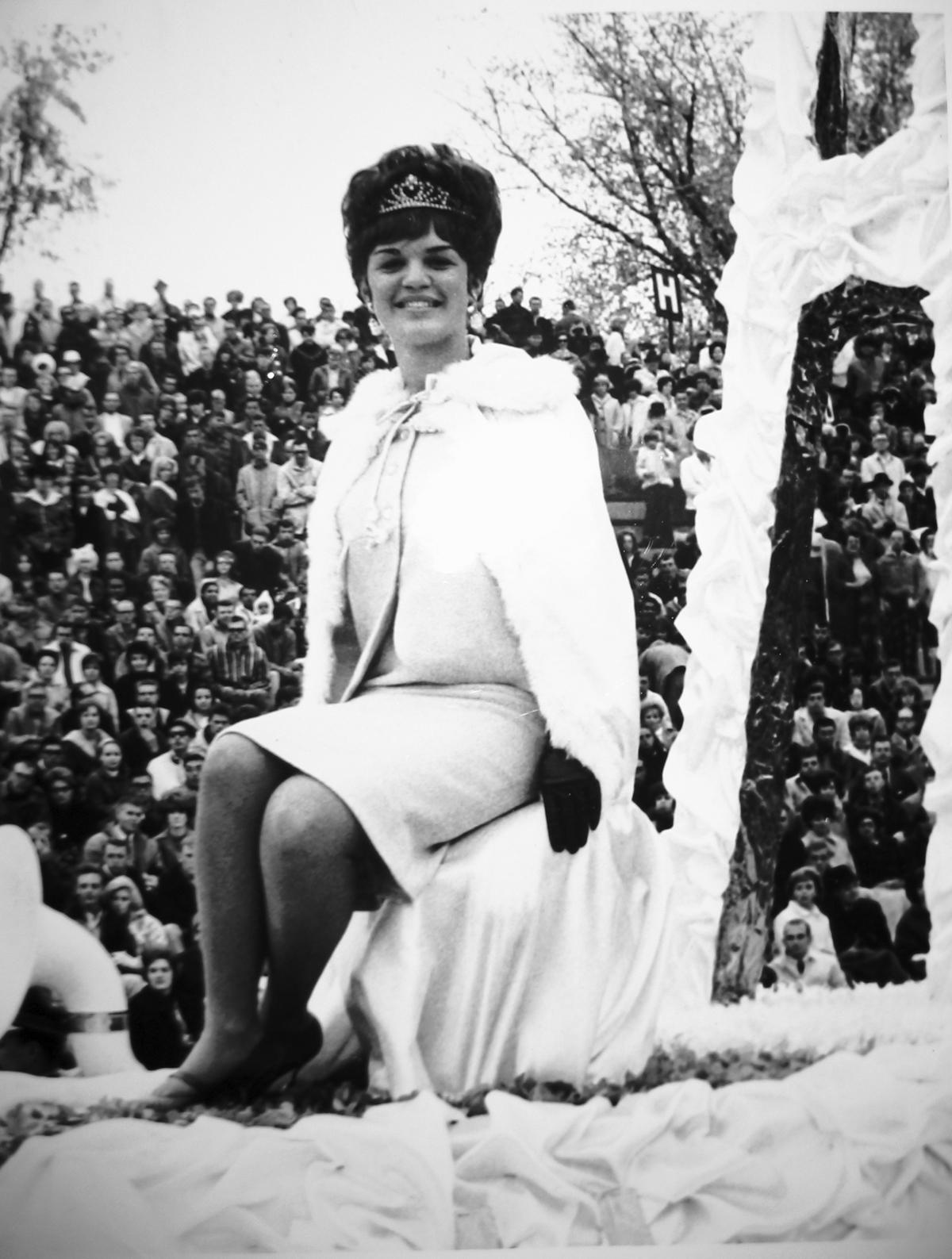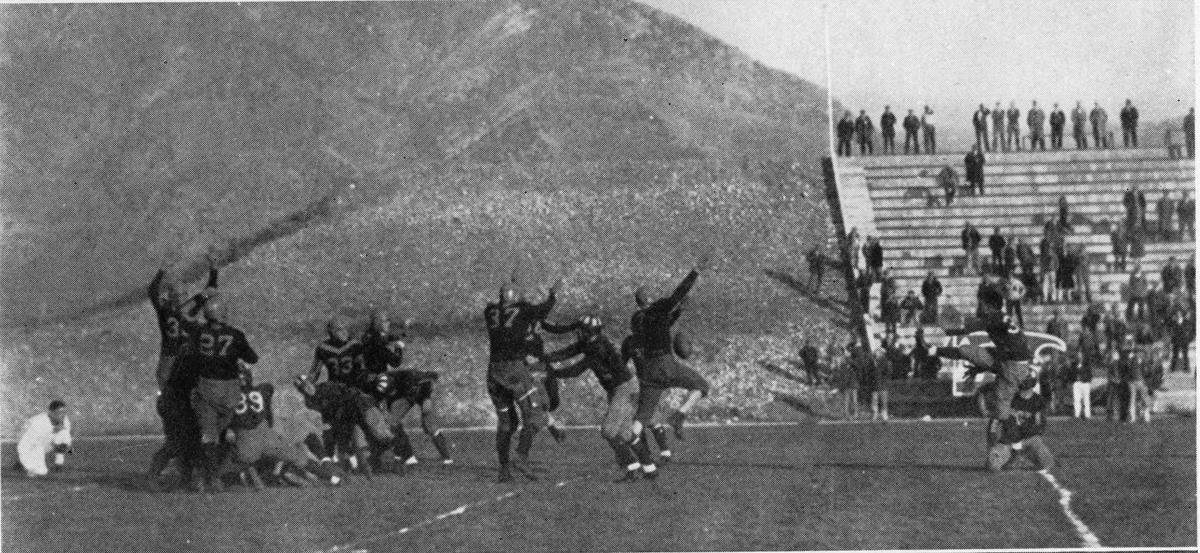Coming home through the years
Whether students are memorizing the alma mater or calling themselves True Aggies at midnight, celebrating the annual Homecoming football game has become tradition — but how far back do Aggie traditions reach?
In 1899, USU’s Alumni Association was formed. It was not until 1930 that the university celebrated its first Homecoming game, along with festivities for students on campus, according to the USU website.
“It was very competitive,” said Leah Dunford Christensen, former Dean of Women and 1955 USU graduate.
Christensen said the parade used to focus more on larger floats and extravagant fraternity and sorority house decorating.
“I graduated in the ‘80s, and us Kappa Deltas would pair up with another Greek house to build a float, because it was so expensive,” said Judy Lawton, USU’s Kappa Delta chapter adviser. “There used to be a lot more funds available before I went to school here, so students and Greeks were able to do big, big things for Homecoming.”
Lawton said traditions and competitions tended to be very prestigious, and students were incredibly involved with Homecoming festivities.
“We would work on our float for a week before Homecoming to make sure it was good enough for all the alumni to see,” said Patty Halafia, USU’s executive director of Alumni Relations and 1977 USU graduate.
Winning best float, or being granted the award for best house decorations and street painting was considered an honor, along with participating in the annual Homecoming King and Queen pageants. Winners would always be announced at the game, which was played at the old football stadium, Christensen said.
“I sense that the university would like to see organizations far more involved than we are today. It’s just different now,” Lawton said. “The traditions were always spectacular, and it’s always fun to look at old scrap books to see how prestigious Homecoming events really were.”
Lawton added that within the past several years fraternities, sororities and other university groups have increased interests by getting involved in Homecoming Week, especially with street painting.
Another popular Aggie tradition mentioned was becoming a True Aggie.
“True Aggie was a tradition when I was in school,” Christensen said. “It always has been and probably always will be a Utah State tradition.”
“I can’t remember a time when there wasn’t a True Aggie Night,” Lawton said.
“It use to be more of a private affair, and not so organized,” Halafia said.
Other traditions included lighting up the “A” on Old Main Hill the night of Homecoming and the annual Homecoming concert.
“Olivia Newton John, Roberta Flack, Earth Wind Fire — you know, those kinds of seventies bands — would come perform on the Thursday night of Homecoming week,” Halafia said.
“It has always been a big time. Alumni love to come home for Homecoming, and we always get to see so many people we know,” Christensen said.
Christensen also mentioned the tradition of Golden Aggies. Every year at the Homecoming football game, USU recognizes alumni who graduated 50 years prior.
She said, “That is a great thing to see every year at the Homecoming game.”
“The main purpose of Homecoming is to reach out to all alumni and invite them back to Logan. Sometimes alumni only ever make it back here for Homecoming, and they’ll bring their families, because it’s such a family-oriented event,” Lawton said.
She said Homecoming is more than a time for celebration. It is also a time for alumni, current students, future students and all of the families in between, to collectively show appreciation for USU and share Aggie pride, she said.
“It’s always fun to practice traditions that have been carried on for years and years, and to do things that future generations can count on doing when they become Aggies,” Halafia said.
“Once an Aggie, always an Aggie.”
– s.marcure@aggiemail.usu.edu

(USU Special Collections)


